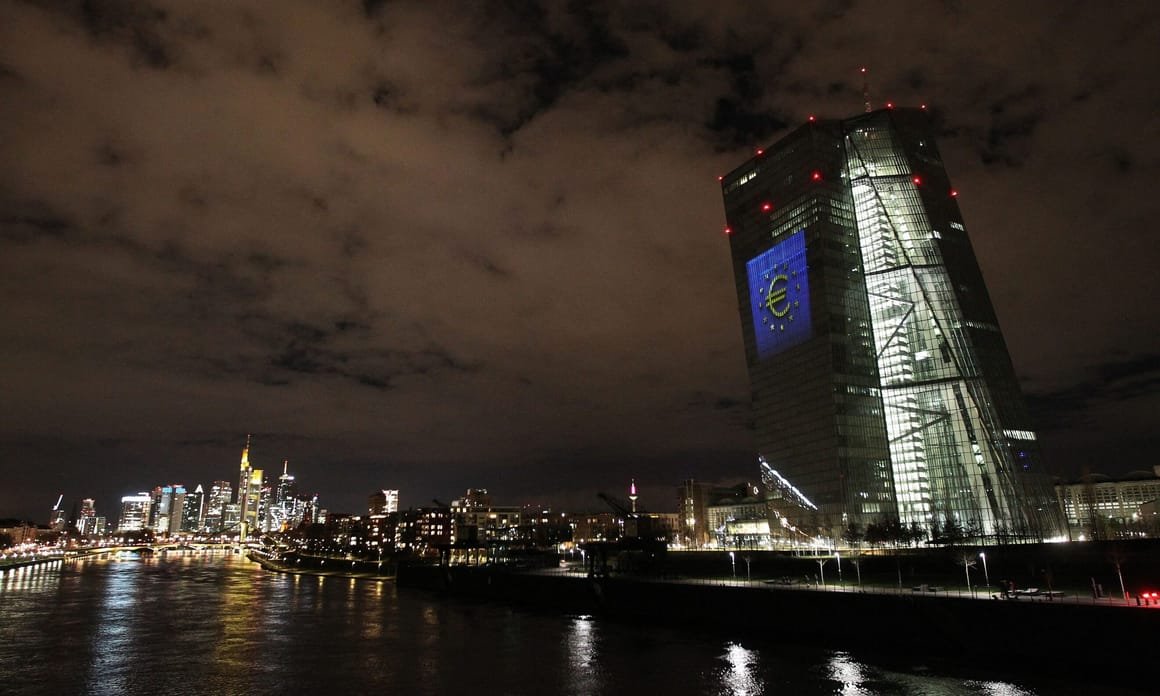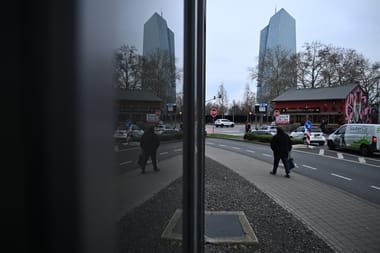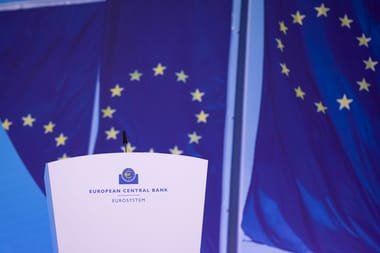Frankfurt softens the hawkish bias that has colored its policy for the last three years, but it still sees policy as restrictive after a fourth cut this year.

The European Central Bank has cut its key interest rate by a quarter-point to 3.0 percent, reflecting continued progress in taming inflation and growing concerns about the state of the economy.
At her regular press conference, ECB President Christine Lagarde acknowledged that the economy has been “losing momentum.” At the same time, the ECB has all but declared victory over inflation with a new set of forecasts that show it largely anchored at the bank’s 2 percent target through 2027.
Lagarde pushed back strongly, however, against suggestions from French journalists in particular that the ECB should do more to support the economy in order to counter the debilitating effects of policy drift and industrial malaise in Germany and of political gridlock in France.
“Member states in the EU and in the euro area in particular have to comply and respect the fiscal governance framework that they have established for themselves, and that includes a combination of fiscal consolidation and growth-enhancing measures,” Lagarde said.
“Everyone has to do their job. The central bank cannot be the jack-of-all-trades.”
She also pushed back on pressure from some members of her Governing Council, who had urged the bank to give a clearer commitment to further rate cuts next year in order to buttress business and household confidence.
“We are not pre-committing to any particular rate path,” Lagarde said, adding — with an eye on measures of domestic inflation that are still running at over 4 percent — that “we are not done yet.”
While the decision — the fourth cut in seven months — was widely anticipated, there had been some speculation on a larger half-point cut after weak data in recent months suggested the economy might have already ground to a standstill, even before an expected onslaught of trade measures next year from U.S. President-elect Donald Trump.
The bank’s staff cut their forecast for growth next year slightly to 1.1 percent from 1.3 percent, but Lagarde said that doesn’t reflect the expected impact of U.S. trade tariffs because it’s still unclear whether or how they will be applied.
ECB staff also trimmed their 2026 growth estimate to 1.4 percent from 1.5 percent previously and forecast 1.3 percent growth in 2027.
Too subtle for some
In its policy statement, the ECB removed a sentence pledging to “keep policy rates sufficiently restrictive for as long as necessary.” (That commitment had been a feature of all its recent policy statements.) It also suggested that “the gradually fading effects of restrictive monetary policy should support a pick-up in domestic demand.”
But with the eurozone economy struggling to generate any momentum, and with inflation all but beaten, the subtle shift in messaging wasn’t enough for some.
“The ECB must react and speed up the pace of rate cuts, unless low confidence derails the nascent recovery and jeopardizes the return to price stability,” said S&P Global Ratings chief EMEA economist Sylvain Broyer in emailed comments. “A commitment to cut rates further back-to-back until the deposit rate reaches neutrality is required.”
While policymakers stress there is no knowing at what level interest rates stop being restrictive, most estimates for the ‘neutral rate’ range between 2 percent and 2.5 percent. Its exact location is in any case likely to be immaterial in the near future, said HSBC analysts Simon Wells and Fabio Balboni in a note to clients.
“If growth continues to disappoint and inflation is at target, then the Governing Council might feel comfortable taking rates lower … without necessarily having to agree on where neutral is,” they said.
Either way, said UBS Chief Eurozone Economist Dean Turner, “the risks are tilted toward the ECB having to do more, not less, to support the economy in 2025.”





